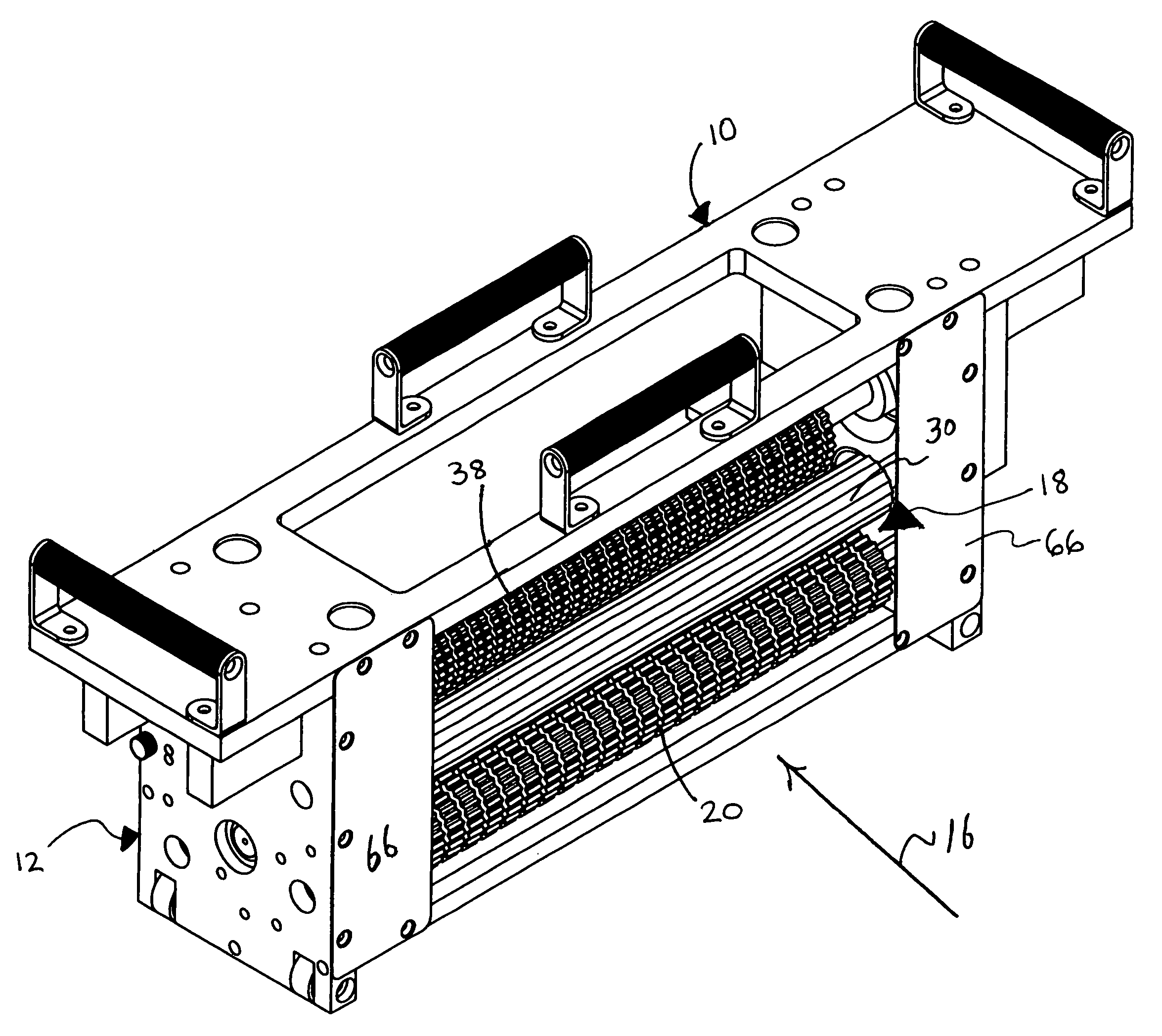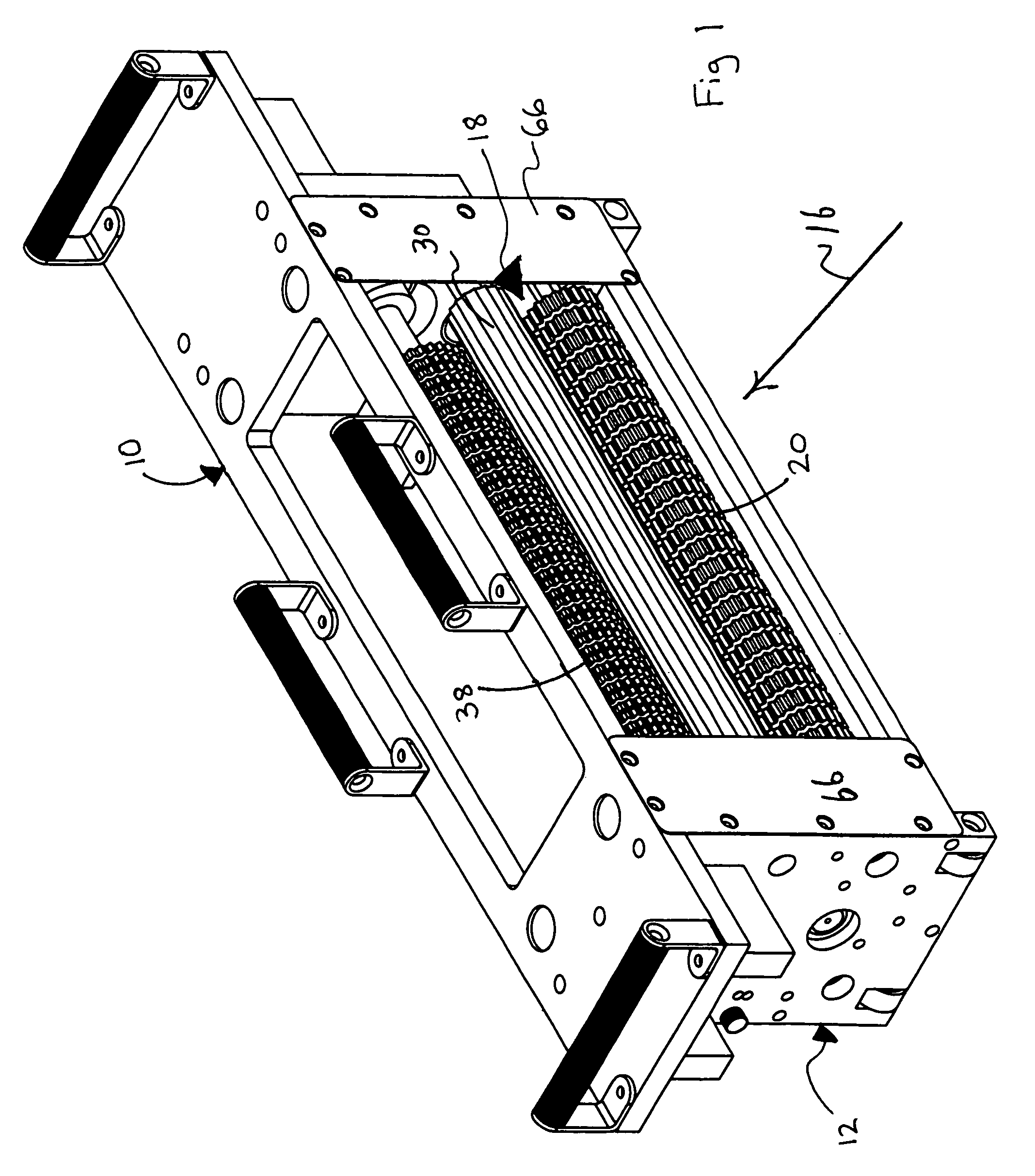Meat cutting assembly
a technology of assembly and meat, which is applied in the field of cutting assembly, can solve the problems of time-consuming, labor-intensive, and inconvenient cutting and other processing, and achieve the effects of facilitating consistent cutting of meat products, preventing or significantly reducing the possibility of meat adhesion to the blade roller, and facilitating accurate and stable feeding and placemen
- Summary
- Abstract
- Description
- Claims
- Application Information
AI Technical Summary
Benefits of technology
Problems solved by technology
Method used
Image
Examples
Embodiment Construction
[0039]As shown in the accompanying drawings, the present invention is directed to a cutting assembly and more specifically a meat cutting assembly generally indicated as 10. In at least one preferred embodiment the meat cutting assembly 10 is constructed into a substantially self-contained modular unit, wherein the plurality of operative and structural components associated with the operation of the cutting assembly 10 are housed within, mounted on or otherwise connected to a housing or frame generally indicated as 12. As such, the cutting assembly 10 may be accurately described and referred to herein as a “modular cutting unit”. The represented modular construction facilitates the efficient disposition of the modular cutting unit 10 within an operative position 88 of a processing line 100, as schematically represented in FIG. 10 and as will be described in greater detail hereinafter. In addition, the cutting assembly or modular cutting unit 10 also includes a path of travel 16 exte...
PUM
 Login to View More
Login to View More Abstract
Description
Claims
Application Information
 Login to View More
Login to View More - R&D
- Intellectual Property
- Life Sciences
- Materials
- Tech Scout
- Unparalleled Data Quality
- Higher Quality Content
- 60% Fewer Hallucinations
Browse by: Latest US Patents, China's latest patents, Technical Efficacy Thesaurus, Application Domain, Technology Topic, Popular Technical Reports.
© 2025 PatSnap. All rights reserved.Legal|Privacy policy|Modern Slavery Act Transparency Statement|Sitemap|About US| Contact US: help@patsnap.com



